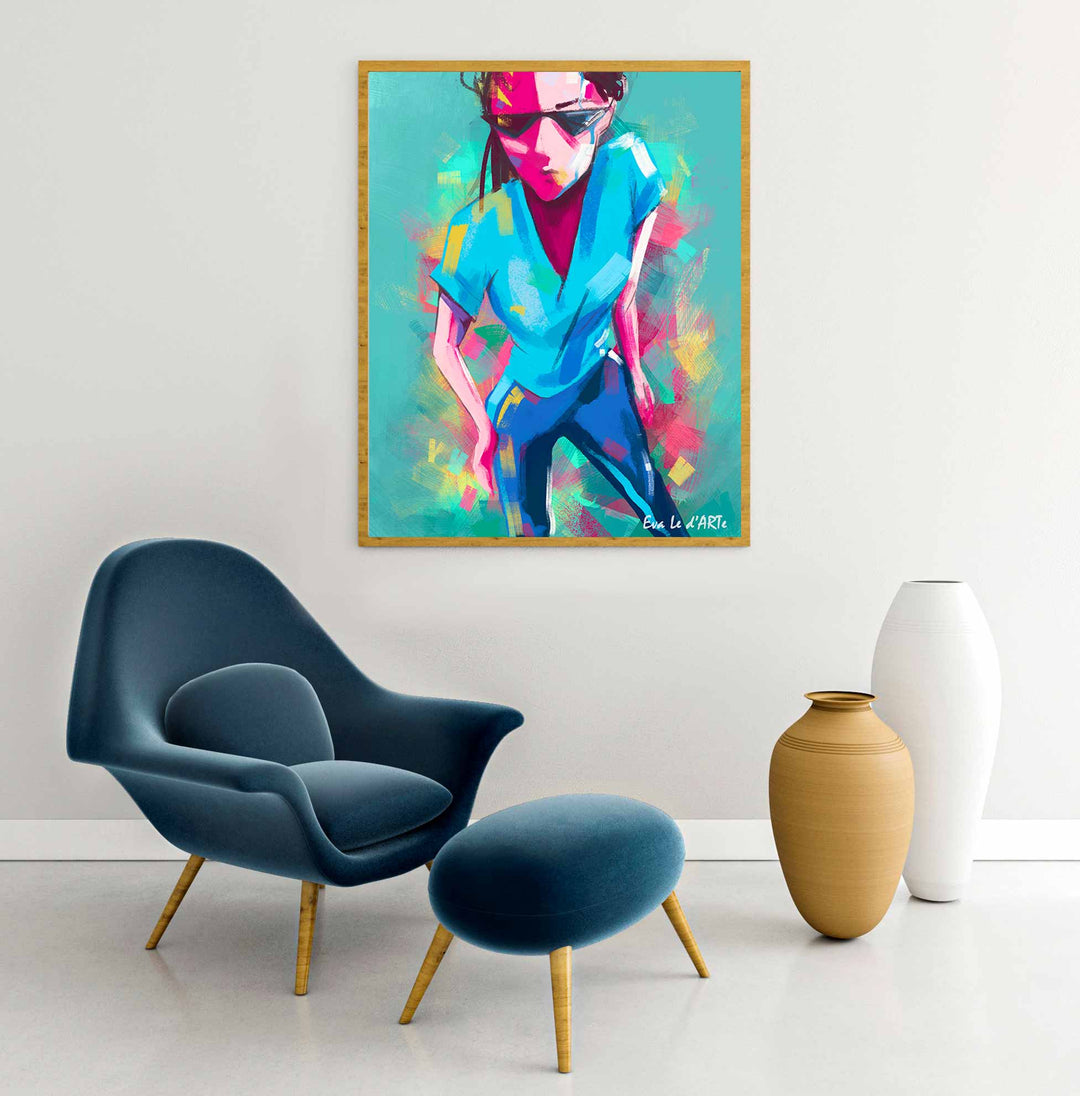Checking Out Iconic Artists and Their Influences on Figurative Oil Painting
The Function of Emotion and Expression in Figurative Oil Paint: A Thorough Analysis of Topic and Structure
The interplay of emotion and expression in metaphorical oil paint serves as an essential lens where one can analyze the complex partnership between topic and structure. Artists harness different methods, from color option to brushstroke characteristics, to cultivate psychological resonance within their works. This nuanced orchestration not just forms audience perception but also welcomes a much deeper inquiry into exactly how these elements integrate to reflect the complexities of human experience. As we explore this rich terrain, one should consider just how details case studies light up the wider ramifications of these creative selections.
Comprehending Emotion in Art
Emotion in art offers as a powerful conduit for expression, allowing artists to share complicated feelings via their work. In figurative oil paint, this psychological deepness is usually represented through the depiction of the human number, recording the nuances of human experience. The choice of subject, shade scheme, and brushwork all contribute to the psychological vibration of a piece.
Artists regularly bring into play individual experiences, social concerns, or global styles to stimulate feelings in the viewer. A picture might mirror vulnerability, while a dynamic figure in activity can symbolize freedom or turmoil. These psychological threads link the customer to the artwork, fostering a discussion that transcends the visual medium.
Furthermore, the interplay between light and shadow can amplify psychological strength, leading the visitor's look and attracting focus to certain aspects within the structure. Making use of appearance in oil painting even more includes layers of intricacy, inviting a tactile response that boosts the psychological experience. In general, understanding feeling in art is essential for appreciating the nuances that define figurative oil painting, as it changes plain representation right into a profound expedition of the human condition.
Key Components of Make-up
In the world of metaphorical oil painting, the composition works as the underlying framework that organizes aesthetic aspects and enhances the psychological narrative. Vital components of make-up include balance, comparison, focal factor, and rhythm, each adding to the total impact of the artwork.
Equilibrium describes the distribution of aesthetic weight within the paint, which can be achieved with in proportion or asymmetrical setups. A well-balanced structure offers security, allowing the audience to involve with the piece harmoniously - figurative oil painting. Comparison, on the other hand, includes juxtaposing different aspects, such as light and dark or cozy and trendy shades, to direct the viewer's eye and stimulate emotional reactions
The focal point is crucial, as it guides focus to the most substantial part of the paint, frequently highlighting the emotional core of the narrative. By skillfully integrating these essential aspects, artists can craft engaging and mentally resonant metaphorical oil paints that captivate and engage their audience.
Topic and Its Effect
Subject plays a critical duty in metaphorical oil painting, as it not just offers as the structure for the story yet additionally forms the viewer's analysis and psychological involvement with the artwork. The option of topic-- be it a singular number, a team dynamic, or a thematic depiction-- straight influences the emotional ambience conveyed to the target market.

As an example, portraits usually evoke individual links, exposing the anonymous complexities of human expression and personality, while scenes showing common activities can develop a sense of belonging or nostalgia. In addition, the social and historic context of the topic enriches the visitor's understanding, triggering much deeper representations on societal standards, values, and the human condition.
Various subjects additionally generate differing degrees of engagement; a dramatic conflict illustrated through numbers in stress might evoke feelings of stress and anxiety or empathy, while serene landscapes can invoke serenity and consideration. Inevitably, the influence of subject issue in metaphorical oil paint is extensive, as it serves as a conduit for emotional vibration, assisting the customer's response and interpretation, and promoting a connection between the art work and the onlooker. This interplay is vital for the effective interaction of the musician's intent.
Methods for Evoking Sensations
The performance of metaphorical oil paint in conveying emotions is substantially influenced by the techniques used by the artist. One of the most important techniques is using color theory, where the critical option of hues can evoke particular psychological actions. Warm colors, such as reds and oranges, commonly evoke feelings of interest or aggressiveness, while cooler tones like blues and environment-friendlies tend to stimulate peace or unhappiness.
One more important method is the adjustment of light and shadow, called chiaroscuro. This method improves the three-dimensionality of numbers, producing remarkable contrasts that can increase emotional depth. The placement of light can direct viewers' emotions, highlighting particular elements of the structure.
Brushwork additionally plays a vital duty; loose, expressive strokes can convey power and spontaneity, whereas smoother methods might recommend tranquility or precision. In addition, the plan of topics within the structure can influence emotional impact. Close distance can recommend affection, while range may indicate isolation.
Ultimately, the mix of these methods makes it possible for artists to craft stories that reverberate with the audience, changing a mere aesthetic experience into an evocative psychological trip. - figurative oil painting

Study of Notable Functions
Checking out notable jobs of figurative oil painting reveals exactly how numerous techniques are employed to evoke powerful emotions. One exemplary instance is Edvard Munch's "The Scream," where the altered figure and swirling background share existential dread. Munch's use shade-- deep blues and brilliant oranges-- increases the psychological impact, showcasing exactly how palette options can form audience experience.
Another substantial job is Pablo Picasso's "Les Demoiselles d'Avignon." Right here, fragmented kinds and vibrant brushstrokes show a tumultuous psychological landscape, testing typical depictions of the women number. Picasso's cutting-edge make-up not just records the customer's focus yet also invites consideration on themes of identification and sexuality.
In Addition, Frida Kahlo's "Both Fridas" offers a poignant find out here exploration of duality and self-identity. The different numbers, linked by a common heart, exhibit Kahlo's psychological deepness and personal narrative. figurative oil painting. Her precise attention to information and symbolic aspects serve to involve visitors on a visceral level
These study emphasize find the profound connection in between emotion and structure in figurative oil paint, exposing how artists harness strategy to interact complicated feelings and stories that resonate throughout time and culture.

Final Thought
Finally, the interaction of feeling and expression in figurative oil paint considerably enhances the customer's experience and interpretation of the art work. Through a cautious option of subject and compositional techniques, musicians convey profound stories that reverberate on both universal and individual levels. The application of color brushwork, theory, and chiaroscuro further amplifies psychological deepness, transforming each canvas into a powerful reflection of the intricacies of the human experience.
In metaphorical oil painting, this emotional depth is frequently represented through the depiction of the human figure, recording the nuances of human experience.Additionally, the interplay between light and shadow can magnify psychological strength, directing the customer's stare and drawing interest to specific elements within the make-up. The use of appearance in oil paint further adds layers of intricacy, welcoming a responsive feedback that boosts the emotional experience.The focal point is vital, as it routes focus to the most significant part of the paint, typically highlighting the emotional core of the narrative. Eventually, the effect of subject matter in metaphorical oil painting is extensive, as it offers as an avenue for psychological vibration, leading the visitor's feedback and analysis, and cultivating a link between the art work and the onlooker.